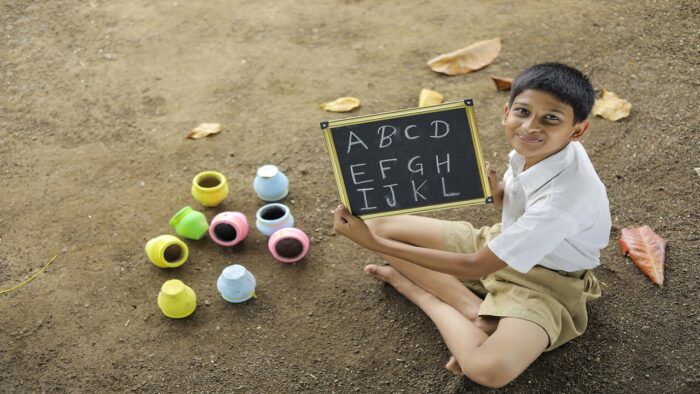National Education Policy (NEP 2020) is claimed to be transformational and has brought many issues pertaining to education to the foreground. NEP 2020 is appreciated by many because it intends to orient our education system towards liberal education. One of the key issues of learning in Indian education, viz., ‘rote learning’ has found its place in NEP, but in a different manner, than its previous avatars. National Curriculum Framework (NCF 2022) which is an outcome of NEP 2020, for the first time, refers to significance of “smriti”, an Indian term for memory, in learning.
For decades now, various policy documents, including the recent NCF 2022 suggests that Indian teachers and students should move away from rote learning. This Policy (NCF 2022) on the one hand focuses on smriti in its approaches to learning and even brings in some scientific justification for it; on the other hand, the same document criticizes rote learning. If one is not careful in reading, NCF document appears impressive. But is it possible to encourage smriti (memory) by advocating elimination of rote learning? Studies all over the world, explicitly or implicitly agree with the fact that memorization and rote learning are synonymous. Therefore, it is almost not possible to talk about rote learning by excluding memorization (Smriti) from it. NCF 2022 exactly proposes what is not possible.
The defense of memorization emerges from India’s legacy of learning through memory over millennia. Memorization and imitation are central part of learning process in Indian culture, some call it mnemoculture. It is very clear that in Indian culture, memorization was always used as the first step of learning. Therefore, it makes sense to effectively use memorization as an important learning method. Such a move by NCF, of invoking emphasis on smriti, satisfies a political constituency, which hails the cultural advantages of memorization in learning process. It also tries to overcome the stigma attached to it. On the other hand, the same document suggests rote learning as a bad practice and should be eliminated from the education system. At the same time, NCF advocates abolishing and nurturing rote learning, which is a huge inconsistency. In fact, any serious lack of understanding of what constitutes rote learning has created vagueness in the policy document.
The policy documents neither clarify what they mean by rote learning, nor do they define what rote learning is. For instance, one cannot talk about rote learning without referring to memorization. Even though global academic literature, associate rote learning, with various terms such as mechanical learning, learning without understanding, surface learning, passive learning etc. But it is unambiguously clear that rote learning means learning through memorization.
For an argument, let us assume that NCF is not pointing towards memorization as such, but it is about rote memorization. Then there must be a distinction between rote memorization and non-rote memorization, and we have not come across studies which can demonstrate such a distinction. It is not possible to talk of non-rote memorization in any of the available studies. In the same way, if one claims that memorization is not rote learning, it is mere sloganeering. Here then, one is either forced to choose smriti, rote learning or eliminate it. But NCF 2022 says that it intends to nurture smriti and yet eliminates rote learning.
NCF 2022, though interested in smriti, has not seriously deliberated upon what rote learning is. The policy emphasizes on utilizing both smriti and conceptual learning, while simultaneously eliminating rote learning. Such claims are certainly bound to create confusion amongst bureaucrats and teachers regarding what they must do in the classroom. Nonetheless one must be aware that, memorization is one of the important modes of learning even in conceptual learning. Therefore, the discussions on learning methods and rote learning in NCF2022, though appears to be very promising, do not denote anything significant.
Our argument is that discussion about rote learning should not be entertained until and unless policy clearly articulates what does one mean by it. The other fundamental question is, why memory should be abolished from learning? If someone learns through memorization and there is a cultural advantage, instead of asking to eliminate it, one should develop strategies to make best use of it. While debating on memorization as a method of learning, there is a conventional understanding among the educators and policy makers that memorization is an impediment to learning. But the issue of transforming whatever is learnt through memorization into a useful outcome is the task of assessment and the methods of teaching. Whether our pedagogy and assessment are designed to convert the memorized content into specific learning outcomes decides the utility of memorization. It appears that most of the Indian exams are designed to suit the articulation of what is memorized than transforming the memorized content into specific learning outcome. Therefore, one should focus on pedagogy and assessment, in such a way so as to make best of the memorization. This would demand the policy makers and stakeholders to look at assessments in a different ways which is a very cumbersome task. If one looks carefully at the traditional places of learning like Gurukula, they exactly use memorization as the early steps of learning and use different evaluation procedures in such a way that a student is excelled in a domain.
One can make big claims for change, but the point is, are they sensible to the teachers? Is it possible to convert these claims into an implementable policy framework? Is it possible to imagine a classroom in India where one intends to eliminate rote learning and revive learning through smriti at the same time? So one must now think the utility of these claims. It is very disappointing to see such claims without much reflection in national policy documents. One must also find some reasonable account of why we Indians produce such policies.
The only possible answer to such a problem comes from the ideas developed by S.N. Balagangadhara. In his work, he goes on to show how in past few centuries descriptions of Indian culture were shaped by the experience of the European culture. When Europeans came to India what they saw and what they experienced of India became source of modern day social scientific understanding of India. When Europeans were thinking and reflecting about Indian culture, they were not producing any scientific description of India, rather thousands of Europeans over centuries tried making sense of India and her tradition through their experience. When their experience, which is neither true nor false about Indian culture, attains the status of scientific truth and then is used to make sense of Indian society by Indians, one runs into the kind of crisis that is described above in the case of rote learning and smriti.
To make it more straightforward one must recognize that it is Europeans who found the learning through memorization practiced by Indians as rote learning more than a century ago. We must recognize that in the medieval European society there was a long-standing tradition of learning through memory. For instance, it was a common practice that Bible (Catechism) was learnt through memorization and repeated recitation. It was largely a Catholic practice. At the latter part of the dominance of Protestantism in Europe, Protestants found these Catholics to be learning scripture by rote, because they were learning by repetition and memorization. When Protestants came to India, they saw all over India people learning through repetition and memorization. By then they already knew these bad practices of the Catholics in Europe and they had already available criticism of learning by rote. The criticism of Indians learning by rote methods as a bad practice was part of the larger story of Hinduism as a false religion and full of superstitious practices. Therefore, the story of rote learning should be eliminated from educational practices became a standard description of Indian society till now.
Today we know that the idea that memorization is an obstacle to learning cannot be substantiated. The criticism of rote learning is actually a story which has no reference in the world. If one removes memorization out of this rote learning, there is nothing left in rote learning. Available studies all over the world show that memorization as a learning strategy has better advantages as opposed to what is assumed as its ills. Many studies have demonstrated that the claims on rote learning are sheer reproduction of Western stereotypes of Asians than being any sort of scientific truth about this world. Therefore, one must ask today what NCF 2022 would achieve by preserving the claims of our colonial masters on memorization as a bad learning strategy.
Feature Image Credit : istockphoto.com
Disclaimer: The opinions expressed in this article belong to the author. Indic Today is neither responsible nor liable for the accuracy, completeness, suitability, or validity of any information in the article.







